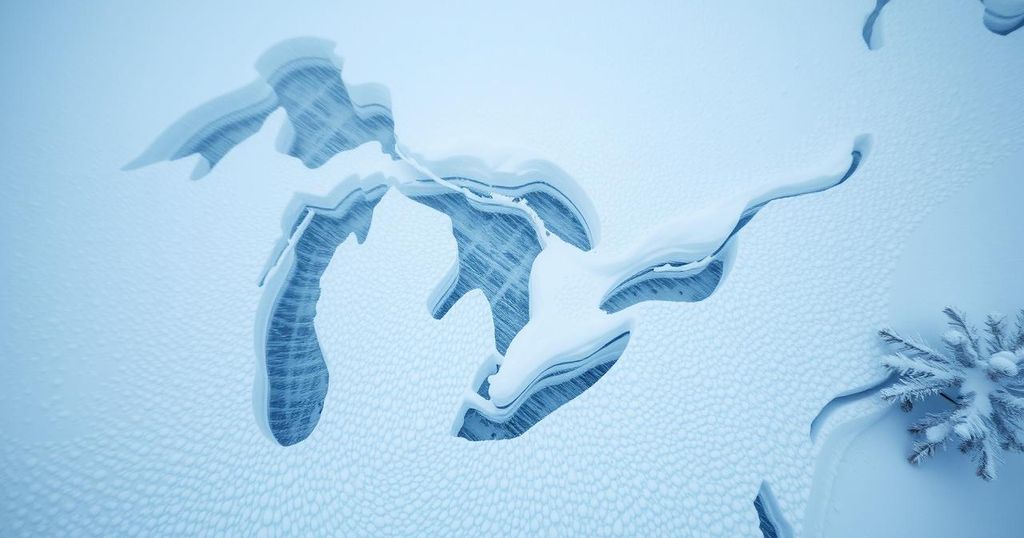Recent Snowfall and Cold Temperatures Affecting the Eastern United States
A clipper system is bringing snow across the Great Lakes, Appalachians, and Northeast, with winter advisories issued for several areas. While the Southwest enjoys unseasonably warm temperatures, cold air follows in the Eastern U.S., resulting in arctic conditions this weekend. Precipitation forecasts indicate a few inches of snow in northern regions.
A clipper system is currently transporting snow showers across the Great Lakes, the Appalachian region, and the Northeast, which will persist until Friday evening. Winter Weather Advisories have been issued for areas including coastal Massachusetts, several locations around the Great Lakes, and regions extending southward that encompass parts of western North Carolina, Kentucky, Virginia, and West Virginia.
In terms of high temperatures for today, Phoenix and the Desert Southwest are the warmest locations, with highs reaching the low 80s. The weather remains above normal and seasonably mild across the Western United States.
Conversely, colder air is infiltrating the eastern two-thirds of the nation, leading to below-normal temperatures. Tonight, the Northern Plains can expect single-digit temperatures, with some regions experiencing below-zero readings. Chilly conditions will also extend into the Gulf Coast, with arctic air predicted to bring bitter cold to the Northeast and East Coast this weekend.
Regarding precipitation, snowfall totals are expected to reach several inches across the Northeast, particularly in New York State, northern Pennsylvania, and northern Maine, continuing through Friday night. Additional wet weather may affect the Ohio Valley, while North Dakota anticipates a few inches of snow near its border with Canada.
Snowfall patterns in the United States can significantly impact travel and local weather conditions. Clipper systems, fast-moving areas of low pressure, often traverse the northern tier of the U.S., bringing snowfall and winter weather advisories as seen in the current forecast. Understanding the dynamics of these weather systems is crucial for anticipating their effects on various regions, particularly during winter months when cold air from Canada influences temperatures and precipitation nationwide. Historical weather data indicates that the interplay of warm and cold air masses greatly impacts the severity of winter weather events.
In summary, a clipper system is currently affecting the Great Lakes, the Appalachian region, and the Northeast, leading to ongoing snow showers and winter advisories. While some parts of the country enjoy unseasonably warm temperatures, significant cold and snowfall are expected to blanket the eastern United States. Monitoring local conditions and air travel delays is essential for safety during this winter weather period.
Original Source: spectrumnews1.com




Post Comment